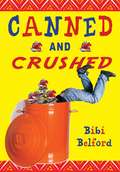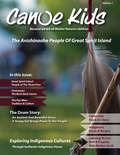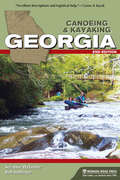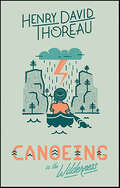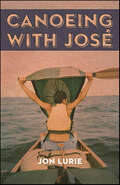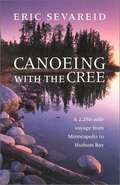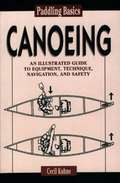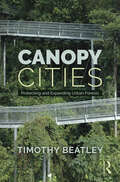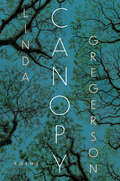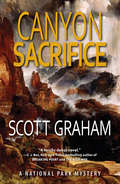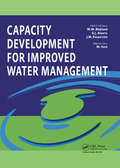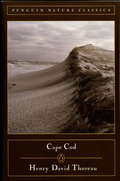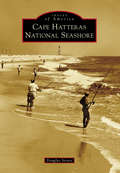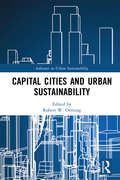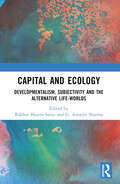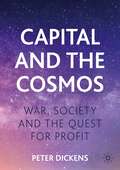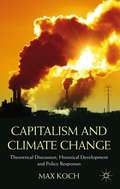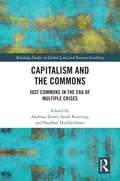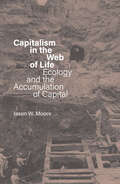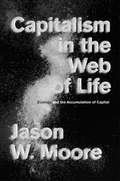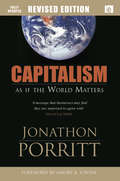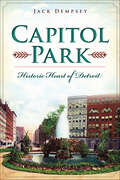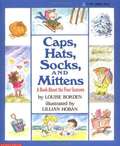- Table View
- List View
Canned and Crushed
by Bibi BelfordWhen Sandro Zapote finds out his little sister needs heart surgery, he is determined to help his parents raise the money they’ll need to help her get better. Sandro’s dad is in the states illegally and must work two jobs to support the family. For one, he picks up roadkill for the department of streets and sanitation and gets paid by the carcass. For the other, he collects scrap metal to recycle for cash. Sandro helps his dad with some of the scrap metal heavy lifting, and one headboard, a weight bench, some gutters, and a few car parts later, Sandro has a brilliant idea: can collecting. Save the environment. Save his family. Maybe even save some spending money for the fabulous, fast new bike he’s been coveting. Well-meaning and with funny inner monologue, Sandro is the kind of person you can’t help but cheer for. He’s a boy who loves drawing, soccer, and his little sister. And whether he’s fishing a fuzzy, dust-coated turtle out from under his sister’s bed or organizing a school-wide can drive all by himself, Sandro is a smart, self-aware hero, who makes just a few mistakes along the way. Canned and Crushed, by first-time author Bibi, gives Sandro a funny, relatable, readable voice, while being fresh and original. It’s a story that will open its readers’ eyes, dealing with issues of illegal immigration, unemployment, racism and religious persecution, bullying, and more--carefully and with a light and often humorous touch. This is a cross between The Absolutely True Diary of a Part-Time Indian and Diary of a Wimpy Kid, and it’s a book no kid will want to miss.
Canoe Kids Volume 1: The Anishinnabe (Ojibwe) Peoples of Great Spirit Island
by The communities of Manitoulin Island Canoe KidsCanoe Kids is a book that we hope you will keep. The information, stories and pictures are timeless and will never feel old. The stories are already thousands of years old and they are as relevant now (perhaps more so) than ever before. As your collection grows each new and old edition can be enjoyed, re-read and shared by new and old family members and acquaintances. Our team doesn't just travel and spend a few days in each location. We spend months on location and build real relationships. That means that the materials you read are not only the result of exhaustive work but also of the care and closeness of the friendships made within the community by the Canoe Kids staff. This, we believe, is much more than just reporting. This is our mission and lives too, and we are thrilled to have you join us on our journeys.
Canoeing & Kayaking Georgia 2e
by Bob Sehlinger Suzanne WelanderCovering thousands of miles of Georgia's waterways, Canoeing & Kayaking Georgia is the definitive guide to Georgia's whitewater to wilderness swamps -- and everything in between.
Canoeing in the Wilderness
by Henry David ThoreauThoreau’s famous trip through the Maine Woods reissued to entertain, encourage, and inspire contemporary naturalists. Thoreau paints the woods and waterways of Maine with the same loving hand that described his Walden home, and entertains with the successes and difficulties of the trip and the quirks of his companion and their guide, Joseph Polis, told with a wit and insight that can only be found in Thoreau.
Canoeing the Boundary Waters
by Marion StresauThe Account of One Family's Explorations in the Boundary Waters Canoe Area.
Canoeing with José
by Jon LurieThe first time journalist Jon Lurie meets José Perez, the smart, angry, fifteen-year-old Lakota-Puerto Rican draws blood. Five years later, both men are floundering. Lurie, now in his thirties, is newly divorced, depressed, and self-medicating. José is embedded in a haze of women and street feuds. Both lack a meaningful connection to their cultural roots: Lurie feels an absence of identity as the son of a Holocaust survivor who is reluctant to talk about her experience, and for José, communal history has been obliterated by centuries of oppression.Then Lurie hits upon a plan to save them. After years of admiring the journey described in Eric Arnold Sevareid&’s 1935 classic account, Canoeing with the Cree, Lurie invites José to join him in retracing Sevareid&’s route and embarking on a mythic two thousand-mile paddle from Breckenridge, Minnesota, to the Hudson Bay.Faced with plagues of mosquitoes, extreme weather, suspicious law enforcement officers, tricky border crossings, and José&’s preference for Kanye West over the great outdoors, the journey becomes an odyssey of self-discovery. Acknowledging the erased native histories that Sevareid&’s prejudicial account could not perceive, and written in gritty, honest prose, Canoeing with José is a remarkable journey.
Canoeing with the Cree
by Eric SevareidIn 1930 two novice paddlers--Eric Sevareid and Walter C. Port--launched a secondhand 18-foot canvas canoe into the Minnesota River at Fort Snelling for an ambitious summer-long journey from Minneapolis to Hudson Bay. Without benefit of radio, motor, or good maps, the teenagers made their way over 2,250 miles of rivers, lakes, and difficult portages. Nearly four months later, after shooting hundreds of sets of rapids and surviving exceedingly bad conditions and even worse advice, the ragged, hungry adventurers arrived in York Factory on Hudson Bay--with winter freeze-up on their heels. First published in 1935, Canoeing with the Cree is Sevareid's classic account of this youthful odyssey. The newspaper stories that Sevareid wrote on this trip launched his distinguished journalism career, which included more than a decade as a television correspondent and commentator on the CBS Evening News.
Canoeing: Paddling Basics
by Cecil KuhneIncludes: Elements and construction of the canoe; Determining the appropriate canoe for different water types; Recognizing and navigating river hazards and rapids; Planning and equipping day and overnight trips; Basic and advanced, solo and tandem paddling techniques; Safety and rescue procedures.
Canopy Cities: Protecting and Expanding Urban Forests
by Timothy BeatleyThis book provides a comprehensive overview of the essential role of trees and forests in cities and examines the creative approaches cities around the world are taking to protect trees and expand their urban forests. Moving beyond the view that trees are luxuries and therefore non-essential to the life of a city, the book examines urban tree policies and approaches that foster tree protection, including tree codes and bylaws, and calls for greater community engagement to preserve this important facet of urban life. Through an international range of examples and case studies, featuring cities in the United States, Canada, Singapore, the Netherlands, Australia, France, New Zealand, Mexico, Sierra Leone, and the United Kingdom. The book offers best practice examples where trees have been further integrated into the fabric of urban planning and design, including forested towers, interior rainforests, tiny urban forests, and metropolitan forests. Written by a leading authority in the field, this is a fascinating read for researchers, students, and practitioners in urban planning, landscape architecture, and environmental policy and planning.
Canopy: Poems
by Linda GregersonA long-awaited yet startlingly urgent new collection from &“a contemporary master&”*—a fierce, big-hearted eye on our last, tumultuous decade, and our fragile environment *Los Angeles Review of Books Linda Gregerson&’s long-awaited new collection is a tour de force, a compendium of lives touched by the radical fragility of the planet and, ultimately, the endless astonishment and paradox of being human within the larger ecosystem, &“in a world where every breath I take is luck.&” From the Syrian refugee and ecological crises, to police brutality and COVID, to the Global Seed Vault buried under permafrost, the poems ask: How does consciousness relate to the individual body, the individual to the communal, the community to our environment? How do we mourn a loved one, and how do we mourn strangers? The magnificent poems in Canopy catalogue and reckon with humanity and the natural world, mortality, rage, love, grief, and survival.
Canyon Sacrifice
by Scott Graham"This riveting series debut showcases Graham's love of nature and archeology, simultaneously interjecting some serious excitement. Graham is to be commended for weaving together several cultures into one story. Recommend to readers who enjoy Tony Hillerman, Nevada Barr, and C.J. Box's Joe Pickett series."-LIBRARY JOURNAL"A gripping tale of kidnapping and murder...in a style similar to mysteries by Tony Hillerman."-ALBUQUERQUE JOURNAL"Graham has created a story [of] richness and depth...Graham's comfort and familiarity with his subject make the story an enjoyable read."-DURANGO HERALD"A riveting mystery...Graham takes readers intimately into the setting, his knowledge of the places he writes about apparent at every turn."-DURANGO TELEGRAPH "A terrific debut novel..."-C.J. BOX, New York Times bestselling author of Stone Cold and Breaking Point"The real star of this engrossing mystery novel is the Grand Canyon itself. Scott Graham clearly knows the territory. In addition to some fine plot twists guaranteed to keep you guessing to the end, Graham delivers a glorious portrait of one of the most compelling landscapes on earth, a place that can kill just as easily as it thrills. This is a topnotch read."-WILLIAM KENT KRUEGER, New York Times bestselling author of Tamarack County"One of the most engaging mysteries I've read in a long while! In archaeologist Chuck Bender, Scott Graham has created a flawed, all-too-human and memorable investigator who had me rooting for him to the end. The setting is magnificent and fascinating-nothing less than the Grand Canyon with its centuries-old secrets. The plot is fast-paced and filled with suspense. Canyon Sacrifice delivers it all and then some."-MARGARET COEL, New York Times bestselling author of Killing Custer"Bring an extra-large bowl of popcorn while you read Sacrifice in one sitting."-C.M. WENDELBOE, author of Death on the Greasy Grass"In this gripping, imaginative mystery set in Grand Canyon National Park, ancient Anasazi culture collides with the modern world in the most unexpected of ways. Like Tony Hillerman, Scott Graham uses his deep knowledge of the region to fashion a thrilling, compulsively readable story."-FRANK HUYLER, author of The Blood of Strangers"As unpredictable and twisty as a switchback trail plummeting into its depths, Graham's thriller sucks you into the mysteries of the canyon and the story of an unsuspecting family whose lives will never be the same."-TED BOTHA, author of The Girl With the Crooked Nose"Graham deftly weaves a first-rate mystery through the caves and canyons and winding roads of the Grand Canyon. If you've been, you'll immediately be drawn into the story. If you've never been, this may be your motivation to buy the ticket! I can't wait to read which national park he tackles next!"-TRICIA FIELDS, Hillerman Prize-winning author of Scratchgravel Road"Stunning setting, intriguing plot and likeable characters make this debut novel a bookseller's dream."-ANDREA AVANTAGGIO, owner of Maria's Bookshoptivation to buy the ticket! I can't wait to read which national park he tackles next!"-TRICIA FIELDS, Hillerman Prize-winning author of Scratchgravel Road"Rooted in the southwest in both geography and culture, Canyon Sacrifice will hook you early and keep you intrigued to the last page. You'll meet archaeologist and investigator Chuck Bender. You'll laugh with him and at him while you get drawn into the mystery he seeks to solve. Stunning setting, intriguing plot and likeable characters make this debut novel a bookseller's dream."-ANDREA AVANTAGGIO, owner of Maria's Bookshop
Capabilities-Based Planning for Energy Security at Department of Defense Installations
by Henry H. Willis Constantine SamarasDepartment of Defense (DoD) installations rely on the commercial electricity grid for 99 percent of their electricity needs, but the U. S. electricity grid is vulnerable to disruption from natural hazards and actor-induced outages, such as physical or cyber attacks. Using portfolio analysis methods for assessing capability options, this paper presents a framework to evaluate choices among energy security strategies for DoD installations.
Capacity Development for Improved Water Management
by M.W. Blokland, G.J. Alaerts, J.M. Kaspersma and M. HareThis collection of papers explains how knowledge and capacity development can contribute to improved, effective water management with a digest of lessons learned in the areas of development of tools and techniques, field applications and evaluation. The authors are prominent practitioners, capacity builders and academics within the water and capacity development sectors.Capacity Development for Improved Water Management starts with an introduction and overview of progress and challenges in knowledge and capacity development in the water sector. The next part presents tools and techniques that are being used in knowledge and capacity development in response to the prevailing challenges in the water sector, and a review of experience with capacity change in other sectors. In the third part a number of cases are presented that cover knowledge and capacity development experiences in the water resources and water services sectors. This part also presents experiences on water education for children and on developing gender equity. The fourth part provides experiences with the monitoring and evaluation of knowledge and capacity building.
Cape Cod
by Henry David Thoreau Paul TherouxThoreau's classic account of his meditative, beach-combing walking trips to Cape Cod in the early 1850s, reflecting on the elemental forces of the sea Cape Cod chronicles Henry David Thoreau's journey of discovery along this evocative stretch of Massachusetts coastline, during which time he came to understand the complex relationship between the sea and the shore. He spent his nights in lighthouses, in fishing huts, and on isolated farms. He passed his days wandering the beaches, where he observed the wide variety of life and death offered up by the ocean. Through these observations, Thoreau discovered that the only way to truly know the sea--its depth, its wildness, and the natural life it contained--was to study it from the shore. Like his most famous work, Walden, Cape Cod is full of Thoreau's unique perceptions and precise descriptions. But it is also full of his own joy and wonder at having stumbled across a new frontier so close to home, where a man may stand and "put all America behind him." Part of the Penguin Nature Library Series Editor: Edward Hoagland With an Introduction by Paul Theroux
Cape Hatteras National Seashore
by Doug StoverCape Hatteras National Seashore was authorized by Congress on August 17, 1937, and established on January 12, 1953. As the nation's first national seashore, it encompasses 30,000 acres and crosses three islands, Bodie, Hatteras, and Ocracoke, for approximately 70 miles. Nearby Pea Island National Wildlife Refuge, located within the authorized seashore boundary, is 5,880 acres. Over the centuries, the seashore has witnessed major historic events, including the landing of the first English explorers, the death of Blackbeard the pirate, Civil War battles, German U-boat attacks, hundreds of shipwrecks, and devastating hurricanes. Descended from horses brought over by Spanish explorers, the Ocracoke ponies still roam the landscape. This National Park Service unit also includes the majestic Bodie Island, Cape Hatteras, and Ocracoke Lighthouses. The seashore is a haven for wildlife and recreational beachgoers. Cape Hatteras National Seashore showcases the rich natural and cultural heritage of America's first national seashore.
Capital Cities and Urban Sustainability (Advances in Urban Sustainability)
by Robert W. OrttungCapital Cities and Urban Sustainability examines how capital cities use their unique hub resources to develop and disseminate innovative policy solutions to promote sustainability. Cities are taking a leading role in defining a sustainable future at a time when national, state, and regional governments in several countries do not provide sufficient leadership. Capital cities stand out among cities as likely leading drivers in the effort to empower sustainable innovation as they provide a hub for connecting a variety of key constituencies. While acknowledging the successes capital cities have achieved, the international, multi-disciplinary contributors to this work discuss how there is room to do more and improve. The promotion of specific sustainability policies in crucial areas such as clean water provision, high tech innovation, public procurement contracting, and improving flood control in capital cities is examined through various global case studies. The examples range from relatively rich capital cities, such as Copenhagen, where the well-financed hub would be expected to succeed in generating sustainable policies, to poorer cities such as Phnom Penh, where such an optimistic outcome can seem less likely.
Capital and Ecology: Developmentalism, Subjectivity and the Alternative Life-Worlds
by Rakhee Bhattacharya and G. Amarjit SharmaThis volume studies the intersection of capital and ecology primarily in one of the most sensitive geographies of the world, the Eastern Himalayan region. It looks at how the region has become a melting ground of neoliberal developmentalism and ecological subjectivities with the penetrating forces of global and state capitalism, economic projects, and complex power relations. The essays in the volume argue that specific focus on energy infrastructure and energy production has pushed technology and capital towards asset building which has had an adverse effect on the environment, labour relations, indigenous knowledge systems, and traditional livelihood practices in the area. They look at assets like mega dams, electricity transmission networks, natural gas grids, infrastructural and developmental projects, and other alternative ventures which require interventions in the natural world and its resource deposits. Interdisciplinary in approach, the volume adopts a variety of lenses — developmentalism, state strategy, indigenous voices, geopolitics, and environmentalism — to provide a unique and alternative narrative on the various dimensions of the ecological risks and livelihood threats. It will be of great interest to scholars and researchers of politics, development studies, indigenous studies, and Asian studies.
Capital and the Cosmos: War, Society and the Quest for Profit
by Peter DickensThis book offers a new understanding of society’s relations with the cosmos. Entrepreneurs such as Jeff Bezos and Elon Musk receive a great deal of publicity, but offer unlikely and implausible visions of space tourism for the general public. Meanwhile, asteroids are seen as ‘rare materials’ which will be extracted and used to produce untold riches for earthbound citizens. The reality is rather different. First, there is no evidence that owners of capital are attempting to extract ‘rare’ materials in the cosmos. The costs would be ‘out of this world’. But capital, not governments, is determining how outer space should be used. Capital’s investments in aerospace companies are actively determining forms of military interventions and the equipment used. And satellite television pumps out forms of culture aimed at a global audience. But these are being ignored and subverted by, for example, indigenous peoples. In short, this book sets out a new understanding of our relations with the cosmos. The forces of capital are certainly powerful but at the same time they are being challenged, subverted and even overturned.
Capitalism and Climate Change: Theoretical Discussion, Historical
by Max KochThis book discusses climate change as a social issue, examining the incompatibility of capitalist development and Earth's physical limits and how these have been regulated in different ways. It addresses the links between modes of consumption, energy regimes and climate change during Fordism and finance-driven capitalism.
Capitalism and the Commons: Just Commons in the Era of Multiple Crises (Routledge Studies in Global Land and Resource Grabbing)
by Andreas Exner Sarah Kumnig Stephan HochleithnerCapitalism and the Commons focuses on the political and social perspectives that commons offer, how they are appropriated or suppressed by capital and state, and how social initiatives and movements contest these dynamics or build their struggles on commoning. The volume comprises theoretical and empirical approaches that engage with three main themes: conceptualizing the commons, analyzing practices of commoning, and exploring commons politics. In their contributions, the authors focus on the development of anti-capitalist commons and explore the issue of practice and politics through case studies from Colombia, the Democratic Republic of Congo, South Africa, and Africa more broadly, Austria, Germany and South Korea, ranging from peri-urban and rural agriculture to urban commons and how they manifest in the Global South as well as in the Global North. The book engages with different discourses on the commons in regard to their relevance for social change and thereby reinvigorates the political meaning of the commons. It provides an original and important approach to the topic in terms of conceptualization, detailing diverse empirical realities, and analyzing potential perspectives. In so doing, the book transcends narrow disciplinary boundaries and expands the focus to the global. Providing a fresh perspective on the commons as a decisive component of alternatives, this title will be relevant to scholars and students of resource management, social movements, and sustainable development more broadly.
Capitalism in the Web of Life
by Jason W. MooreFinance. Climate. Food. Work. How are the crises of the twenty-first century connected? In Capitalism in the Web of Life, Jason W. Moore argues that the sources of today's global turbulence have a common cause: capitalism as a way of organizing nature, including human nature. Drawing on environmentalist, feminist, and Marxist thought, Moore offers a groundbreaking new synthesis: capitalism as a "world-ecology" of wealth, power, and nature. Capitalism's greatest strength--and the source of its problems--is its capacity to create Cheap Natures: labor, food, energy, and raw materials. That capacity is now in question. Rethinking capitalism through the pulsing and renewing dialectic of humanity-in-nature, Moore takes readers on a journey from the rise of capitalism to the modern mosaic of crisis. Capitalism in the Web of Life shows how the critique of capitalism-in-nature--rather than capitalism and nature--is key to understanding our predicament, and to pursuing the politics of liberation in the century ahead.From the Trade Paperback edition.
Capitalism in the Web of Life: Ecology and the Accumulation of Capital
by Jason W. MooreFinance. Climate. Food. Work. How are the crises of the twenty-first century connected? In Capitalism in the Web of Life, Jason W. Moore argues that the sources of today's global turbulence have a common cause: capitalism as a way of organizing nature, including human nature. Drawing on environmentalist, feminist, and Marxist thought, Moore offers a groundbreaking new synthesis: capitalism as a "world-ecology" of wealth, power, and nature. Capitalism's greatest strength--and the source of its problems--is its capacity to create Cheap Natures: labor, food, energy, and raw materials. That capacity is now in question. Rethinking capitalism through the pulsing and renewing dialectic of humanity-in-nature, Moore takes readers on a journey from the rise of capitalism to the modern mosaic of crisis. Capitalism in the Web of Life shows how the critique of capitalism-in-nature--rather than capitalism and nature--is key to understanding our predicament, and to pursuing the politics of liberation in the century ahead.
Capitalism: As If the World Matters
by Jonathon PorrittAs our great economic machine grinds relentlessly forward into a future of declining fossil fuel supplies, climate change and ecosystem failure, governments are at long last beginning to question the very structure of the global economy. In this fresh, politically charged analysis, Jonathon Porritt wades in on the most pressing question of the 21st century: can capitalism, as the only real economic game in town, be retooled to deliver a sustainable future? Porritt argues that indeed it can, and it must, as he lays out the framework for a new ?sustainable capitalism? that cuts across the political divide and promises a prosperous future of wealth, equity and ecosystem integrity.
Capitol Park: Historic Heart of Detroit (Landmarks)
by Jack DempseyCapitol Park is the only city park in America where a state's first governor is buried. It's the birthplace of democracy in Michigan. Underground Railroad site. Streetcar and transit hub. Urban canyon. A block north of Detroit's iconic Coney Island restaurants. A symbol of the city's late twentieth-century decay, now a key part of its revitalization in a new millennium. Jack Dempsey, award-winning author of "Michigan and the Civil War" and president of the Michigan Historical Commission, uncovers tales of a uniquely inspirational public space that epitomizes the ups and downs of Detroit's three centuries.
Caps, Hats, Socks, and Mittens: A Book About the Four Seasons
by Louise Borden Lillian HobanBorden takes children around the calendar and introduces them to the uniqueness of each season . . . Ebullient. --Booklist.
